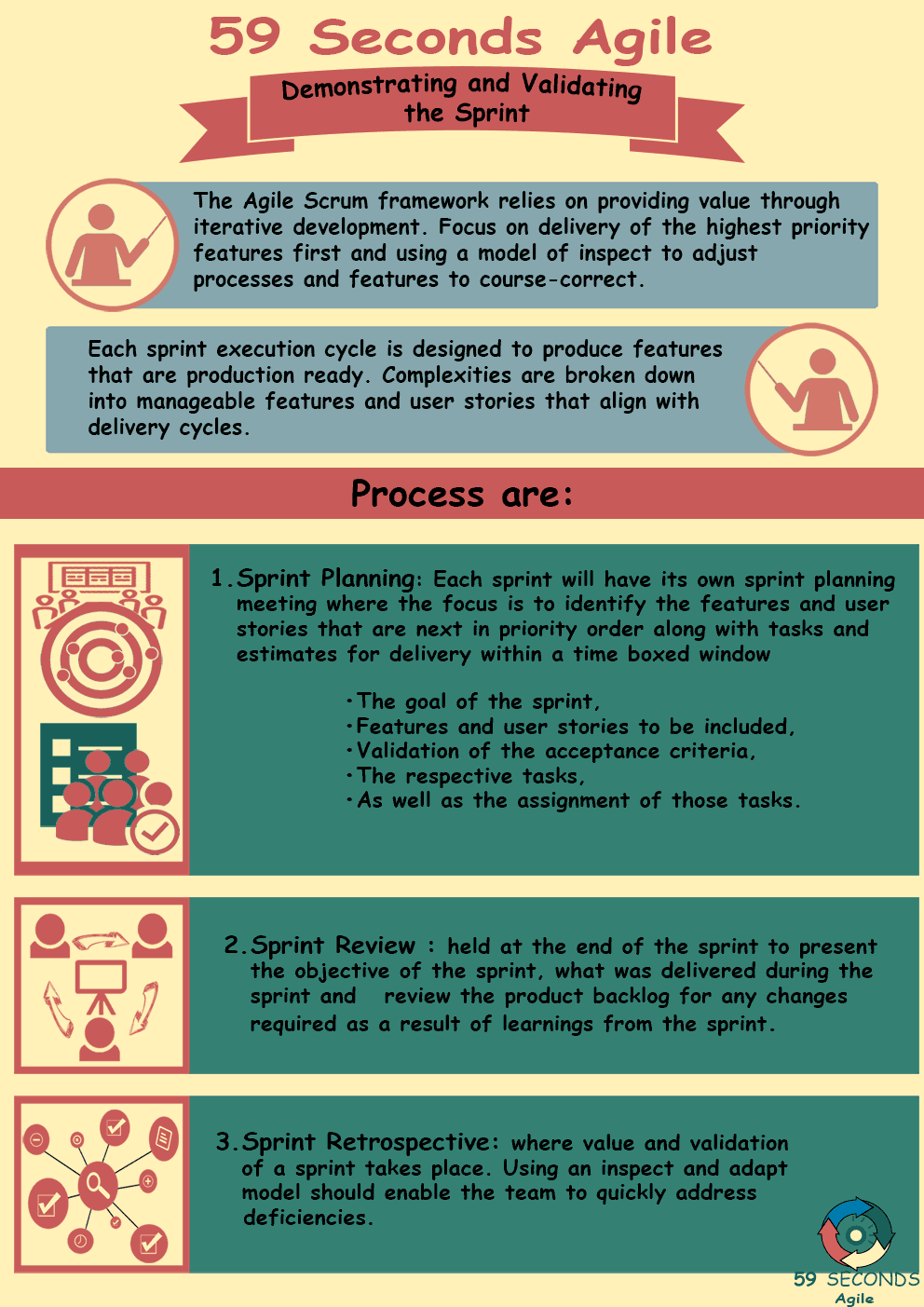Demonstrating and Validating the Sprint
A 59 Seconds Agile Training Video
Continue to Part 2 Below
Demonstrating and Validating the Sprint
A 59 Seconds Agile Article
This article provides an ‘Introduction to Successful Delivery with Scrum’ and looks to discuss the process for Demonstrating and Validating the Sprint
Successful Delivery with Scrum
Let’s take a look at some ways you and your team can adapt your working and communicating methods to improve your product delivery. We’ll divide the methods into three main groups: tools, people, and mindsets. These are the three major categories of assets required when you’re developing a new product.
First of all, if your team doesn’t have the right tools, you’ll be starting your project at a disadvantage. Having the right tools can assist your team in making collaboration, both in-person and virtual, much easier for all of the stakeholders involved.
This supports the scrum foundation of prioritizing people over processes. If there are any tools that can make your process easier or more inclusive for everyone involved, they’re well worth finding and testing out.
Streamlining your process leads to less waste, which can help your project be successful. Proper preparation leads to the successful delivery of products.
Metrics or scorecards are the common tools for measuring progress.
On the other hand, a measurement that is based on specifications, instead of working software, does not provide an accurate indication that it will meet the needs of the customer and does not build confidence that the product is working and will meet the needs of the customer.
Continue Reading —> Next
Demonstrating and Validating the Sprint
A 59 Seconds Agile Video Animation
Continue Reading —> Next
User Stories Applied
A 59 Seconds Agile Book Review
User Stories Applied by Mike Cohn is one of our favourite books on Agile User Stories. The book starts with an overview into user stories, and details what a user story is and the different aspects of them. He then discusses how to go about writing a user story, and provides details of the INVEST criteria that can be used to determine if the story is meeting all of its objectives. Next Mike gives an in depth discussion of who user stories are written for and where to begin when gathering the details for them. The book then discusses acceptance testing user stories, including how to go about specifying these criteria and the responsibilities of the development team and customers during this process.
Continue Reading —> Next
Demonstrating and Validating the Sprint
A 59 Seconds Agile Infographic

Continue Reading —> Next
Agile Scrum Master Training Course
Our Favourite Agile Books
We found these books great for finding out more information on Agile Scrum:
Continue Reading —> Next

